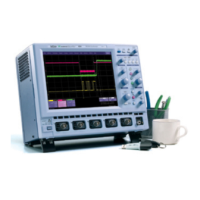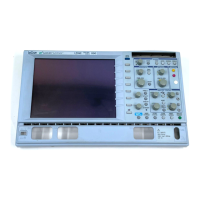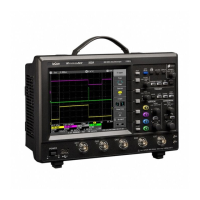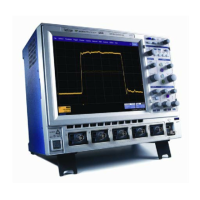X-Stream Operator’s Manual
WM-OM-E Rev I 413
nlts Non-Linear Transition Shift
Definition Provides a measurement of the nonlinear transition shift for a disk drive signal.
Description Using the DDA’s correlation function, nlts measures the nonlinear transition
(adjacent location) shift. At least two full cycles of the test sequence are required
for the auto-correlation. In addition, the period of the waveform must be specified.
The parameter then verifies, and may adjust, the pattern length based on the
value provided. This is crucial, because variations in disk rotation speed make the
exact pattern length for a disk waveform difficult to determine.
Using the pattern length as a starting point, the DDA looks for an auto-correlation
peak at the length. At the top of the peak, the pattern repeats. The DDA locates
the top, and notes the corresponding time so as to determine the exact pattern
length. Then it recalculates the auto-correlation, using this length. If the value of
the auto-correlation peak at the pattern length is less than 0.9, the NLTS is not
calculated. This is because the pattern-length sections will be too uncorrelated to
provide a meaningful result. Otherwise, the pattern length value is used to
calculate nlts. Using the pattern delay value, the DDA measures the
auto-correlation coefficient for the first pattern-length chunk of the input waveform
with a second pattern-length chunk, starting from the beginning of the input
waveform at the delay value.
In order to correctly calculate nlts, the disk drive waveform must be a
pseudorandom sequence that will create an echo in an auto-correlation
calculation, corresponding to the non-linear transition shift. Typically, this
waveform is a 127-bit pattern based on an x
7
+ x
3
+ 1 polynomial; and the NLTS
echo appears at a pattern delay of 20.06% of the input pattern length. Ideally, the
value of NLTS is:
NLTS(%) = 200* Correlation Coefficient (at delay).
However, because noise in the input waveform can affect the correlation
coefficients value, the DDA averages several NLTS measurements to reduce the
effect of noise. An NLTS measurement is performed for each pattern, and the
results averaged. All the individual NLTS measurements can be observed by
histogramming the nlts parameter.
The greater the number of pseudorandom pattern periods in the input waveform,
the greater the reduction in the effect of noise on the nlts result. In order to further
reduce the impact of noise, the NLTS calculations are adjusted by dividing their
value by the correlation coefficient value at an integral number of pattern-length
delays.
The following table gives the standard deviation of the nlts parameter for varying
amounts of auto-correlation signal-to-noise, and numbers of repetitions of the
pseudorandom sequence in the input waveform. The sampling rate used was four
samples/bit cell, and the input waveform had 20% NLTS.
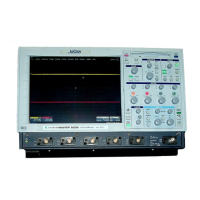
